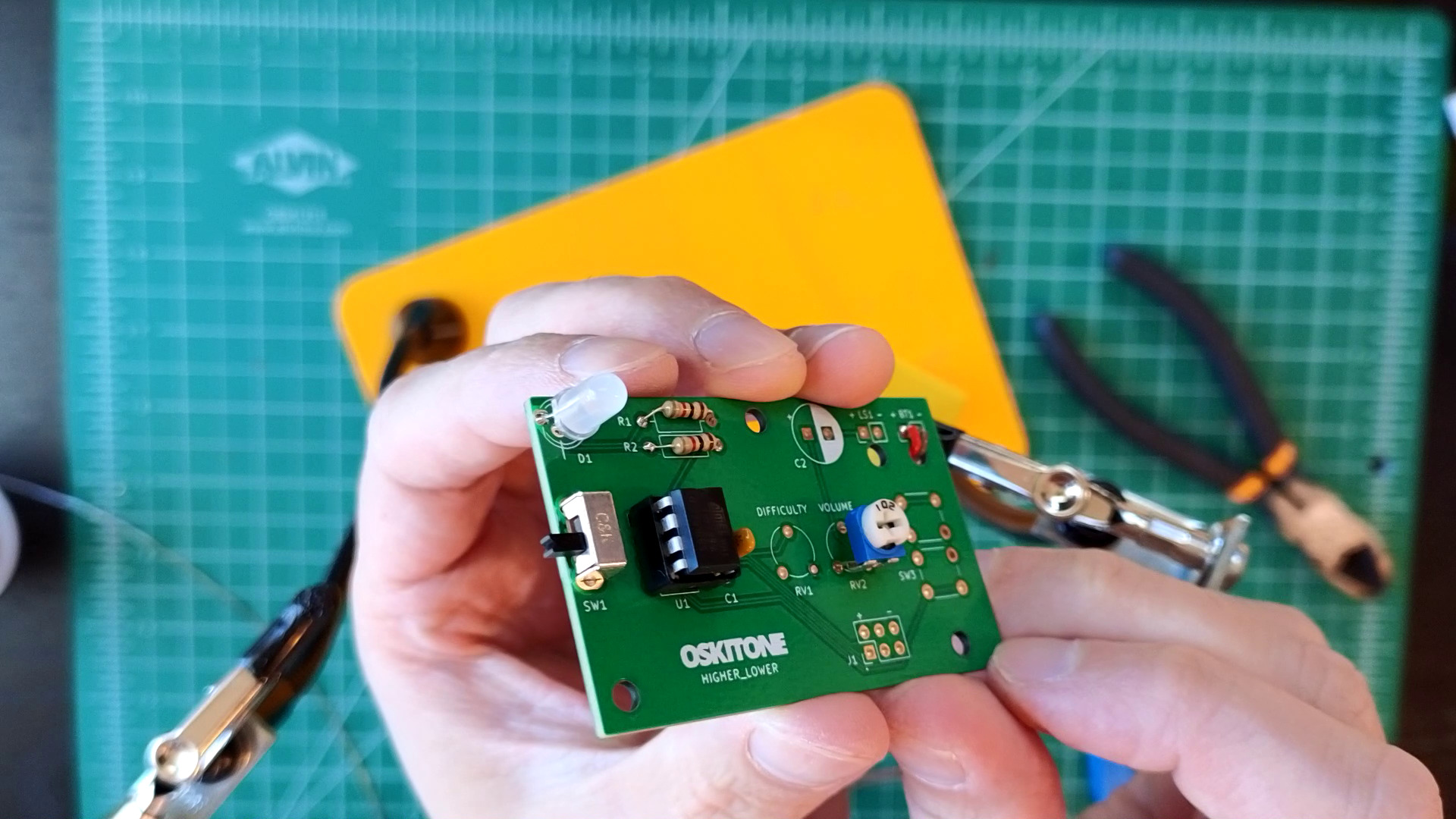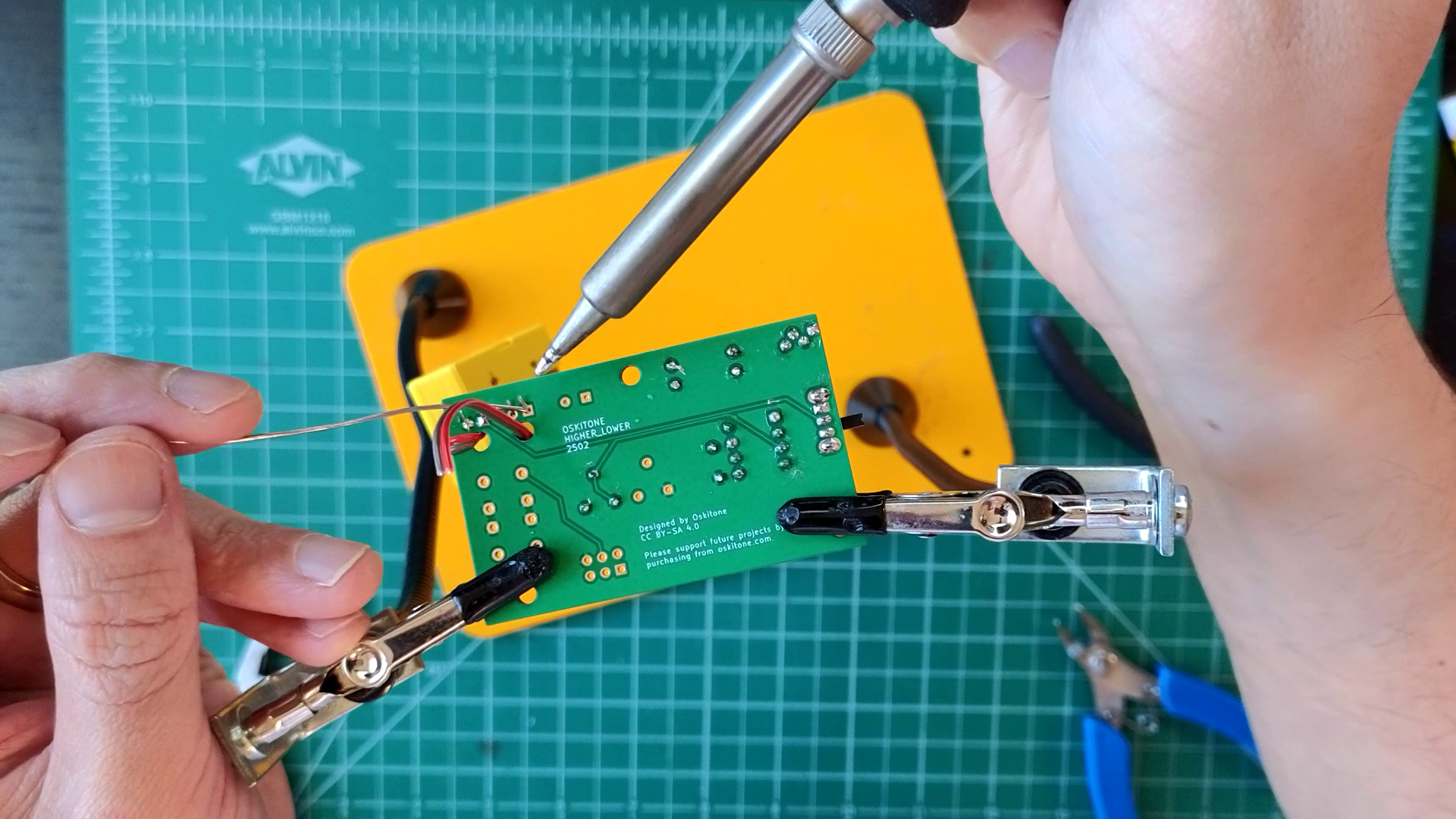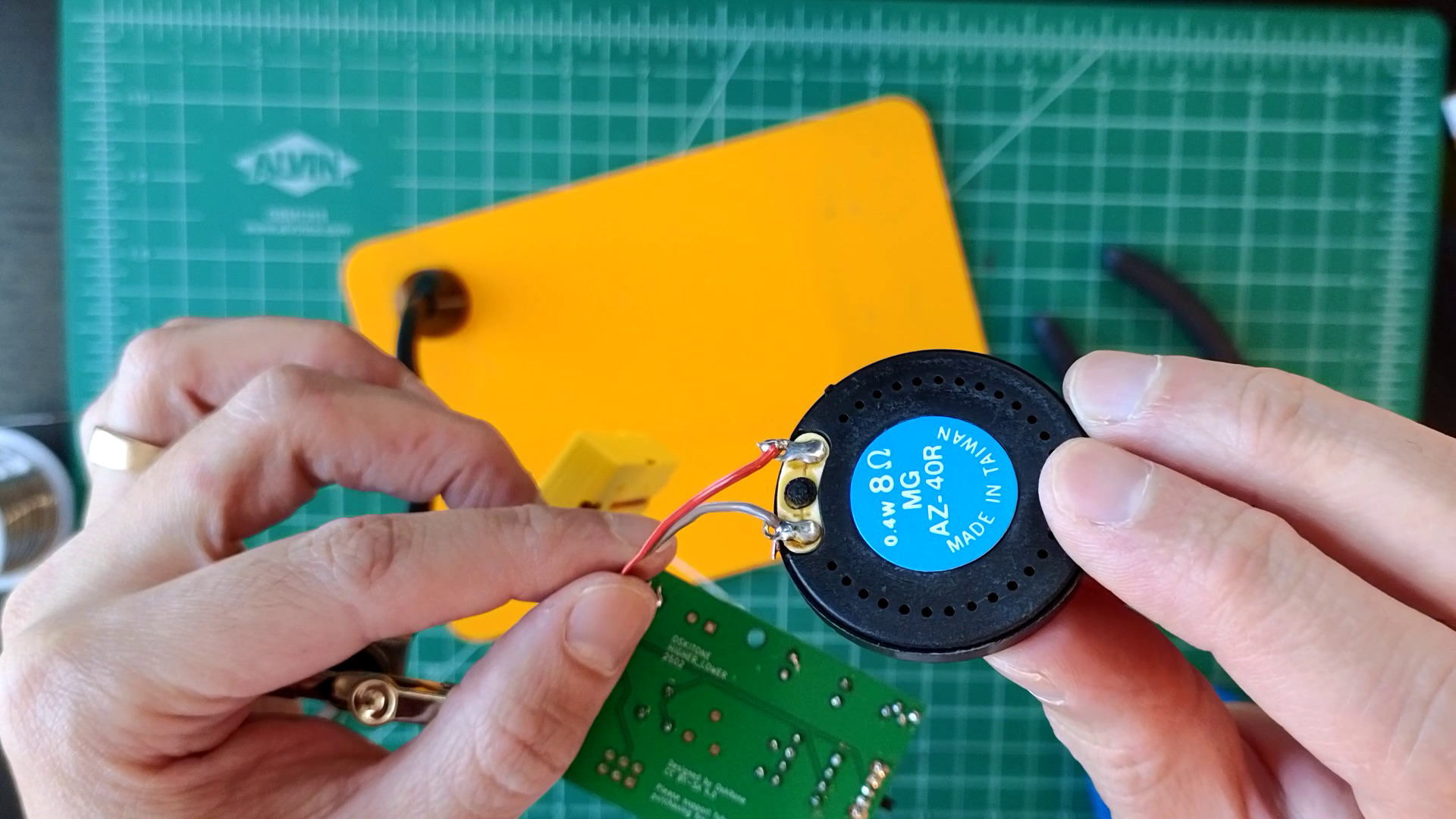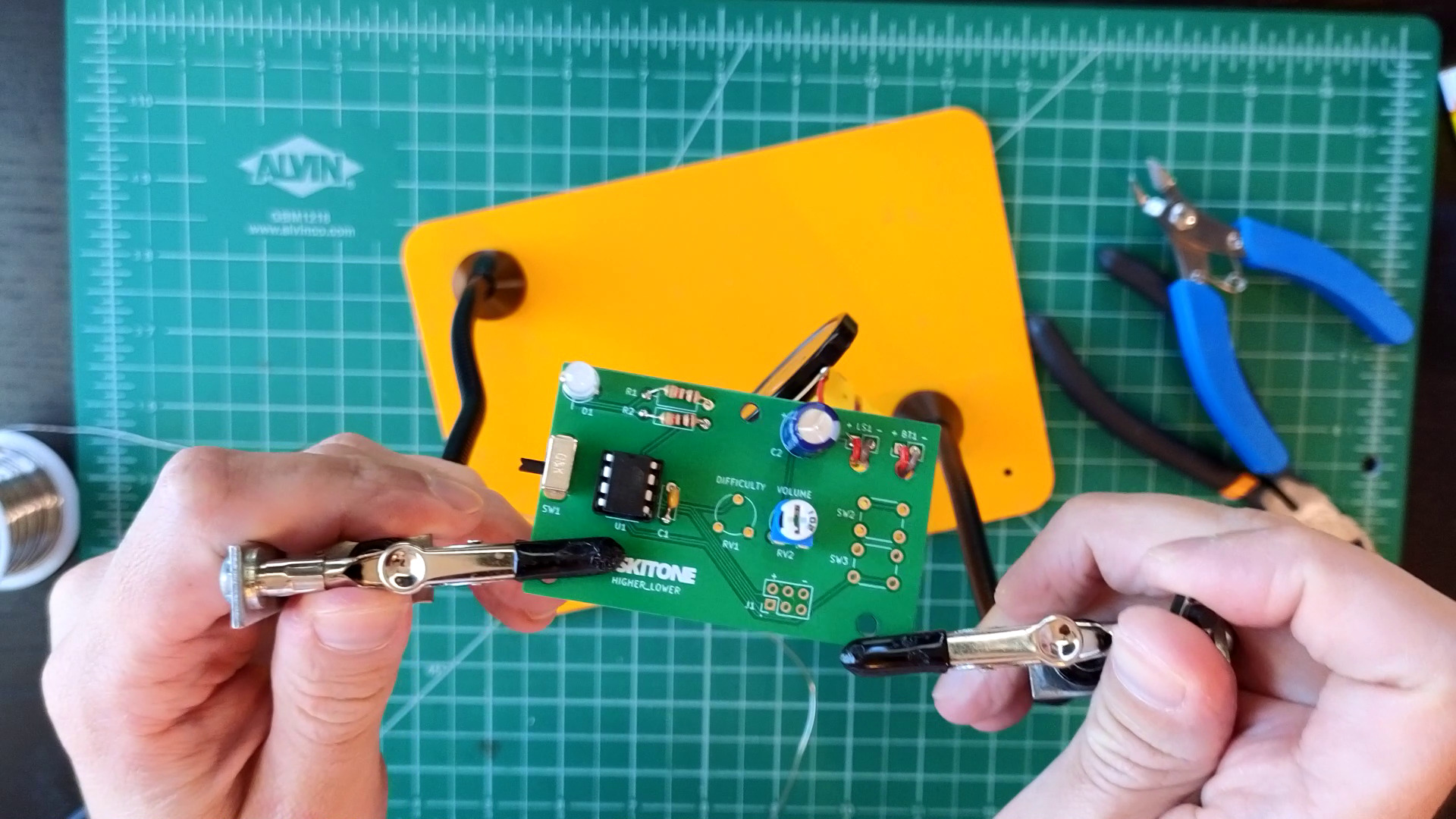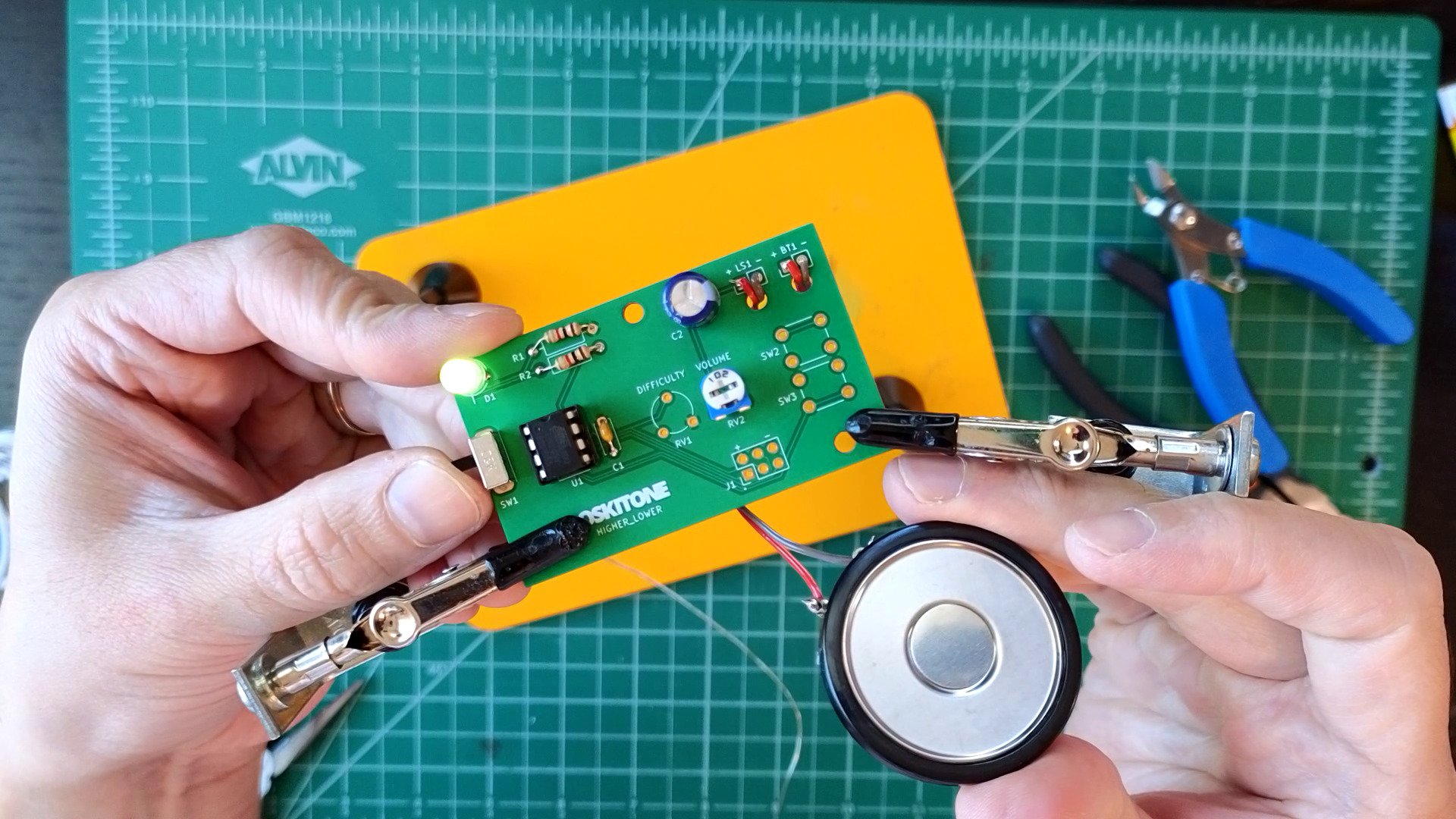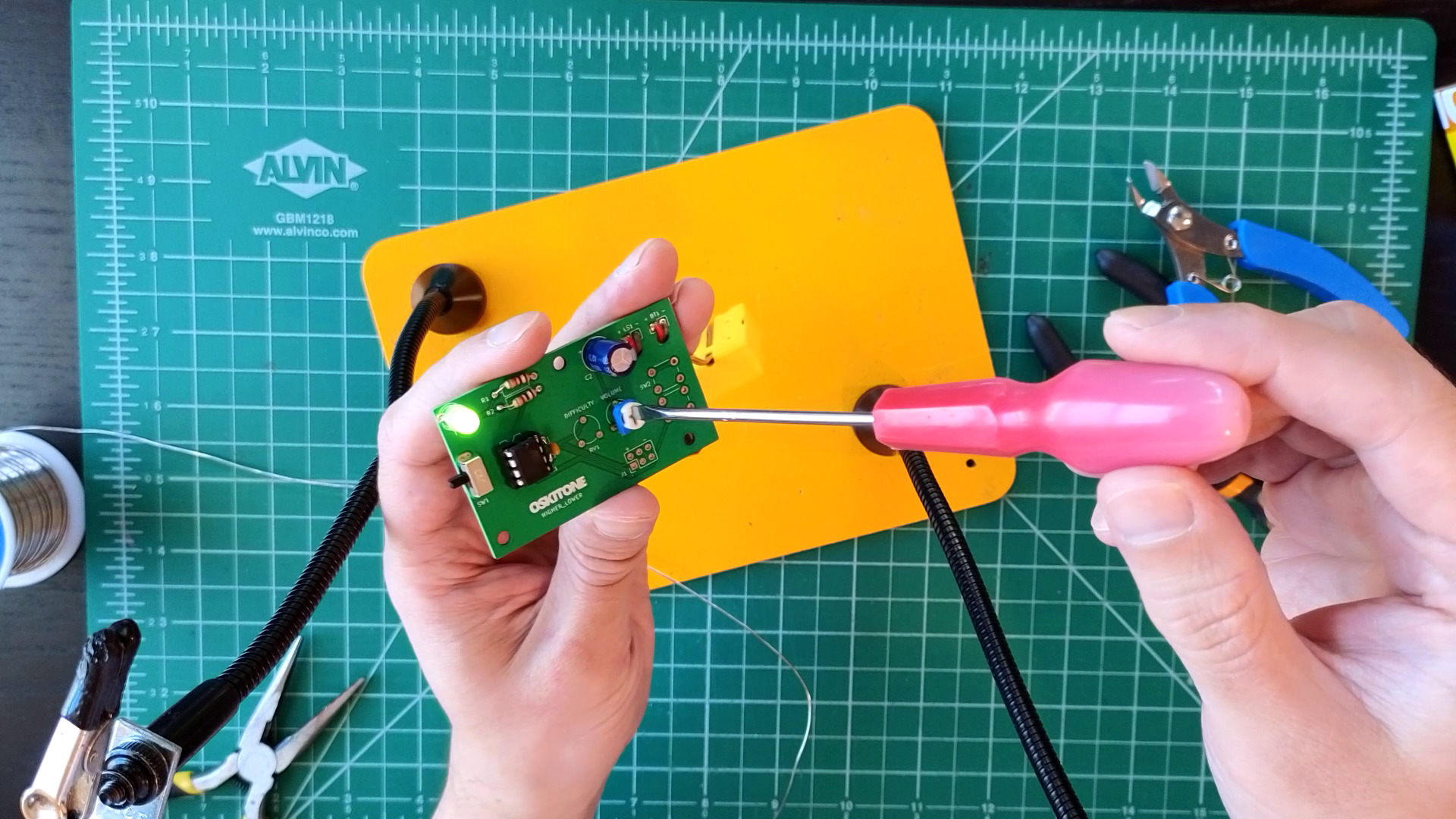Make some noise
Steps
- Solder trim potentiometer (aka "trimpot") RV2 (1k, marked "102").
- Wire speaker to LS1.
- Solder capacitor C2 (220uF).
Test
Sliding SW1 to power the board, a little tune plays out of the speaker. This is the "Higher Lower" game theme song!
Adjust RV2 with a screwdriver for volume control.
Not working as expected? Check the PCB troubleshooting section. Otherwise, continue.
How it works
One of the pins on the ATtiny85 is tasked with outputting square waves by quickly alternating between low and high voltage.
It connects to variable resistor RV2, which works the same way that the R1 resistor did when you lit the LED: it limits current. The variable part of RV2 means that how much it limits is set by turning its dial. A higher resistance (measured in Ω or "ohms") means a smaller current which means a quieter sound from the speaker.
Variable resistors are called potentiometers (or "pots"), and small potentiometers like these are trimmers (or, adorably, "trimpots").
C2 is a coupling capacitor. Think of it like a big bucket that fills up with voltage before dumping it at the speaker.
When that voltage drives an electromagnet that vibrates a cone inside the speaker, it creates ripples in the air that eventually reach your ears as sound waves.
